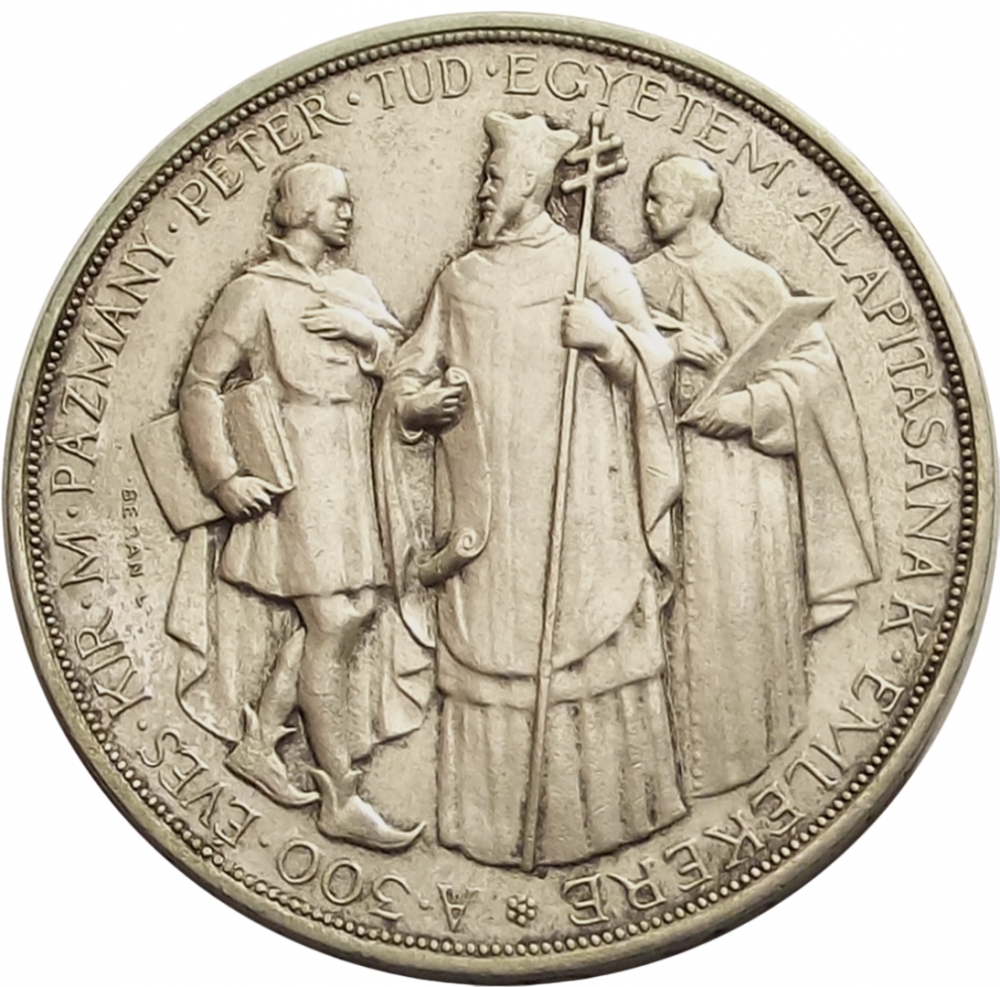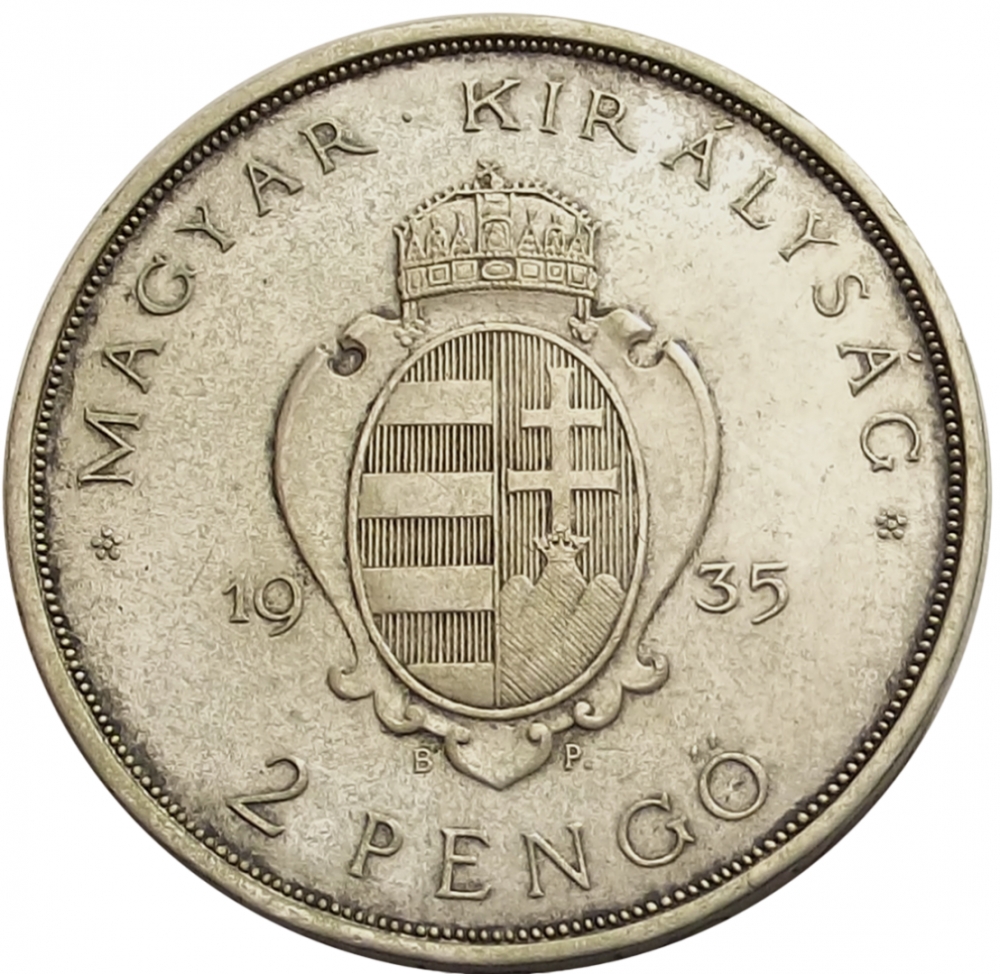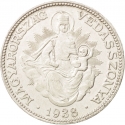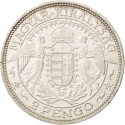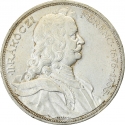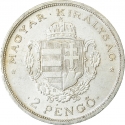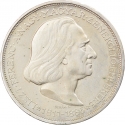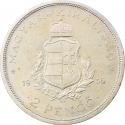You are about to finish your registration. Please check your mailbox (including spam folder). There should be a letter with a confirmation link. Check setting to make sure that your e-mail address is correct.
Send letter againDescription
Miklós Horthy de Nagybánya (1868–1957) was a Hungarian admiral and statesman, who served as Regent of the Kingdom of Hungary between World Wars I and II and throughout most of World War II, from 1 March 1920 to 15 October 1944.
Engraver: Lajos Berán
Obverse

|
Depicts Archbishop Péter Pázmány, holding a double cross in one hand and a scroll in the other, symbolizing the founding charter of the university. In front of him stands a youth holding a book, behind him and a physician. On the left side of the depiction, in the center, is the engraver's privy mark. Along the edge of the coin runs a decorative string of pearls, and on the inner side of this is the inscription "IN COMMEMORATION OF THE 300TH ANNIVERSARY OF THE FOUNDING OF THE ROYAL HUNGARIAN PÉTER PÁZMÁNY UNIVERSITY", separated at the bottom of the coin by the floral motif. A • 300 • EVES • KIR • M • PAZMANY • PETER • TUD • EGYETEM • ALAPITASANAK • EMLEKERE • |
|---|---|
Reverse

|
Depicts a crowned coat of arms of the Kingdom of Hungary, set in a Baroque frame. On either side of the coat of arms is the issue year "1935", divided into two parts. At the bottom of the depiction, also divided into two parts, is the mint mark "BP". At the top of the coin, separated by a dot, is the inscription "HUNGARIAN KINGDOM". At the bottom edge, separated by floral motifs, are the denomination and the inscription "PENGŐ". • MAGYAR KIRÁLYSÁG • |
| Edge |
2 Pengő
Regency
300th Anniversary of the Pazmany University
KM# 513 Unger# 1513 Huszar# 2262 Adamo# P7.1
300th Anniversary of the Pazmany University
